
The Commons is where you can find faculty-curated information, faculty profiles, resources for teaching and learning, and information about all Center activities. Faculty may submit news or resources to be considered for curation and dissemination to the University community. Contribute to the Commons.


AI Innovation Community: Sandbox Activity #4
Having surveyed the teaching and learning potential of a variety of tools, the AI Innovation Community turned their attention to ethical aspects of artificial intelligence. In this round of exploration, participants sought to understand gender and cultural biases inherent in AI image generators. When they came back together to share their experiences, they discussed strategies to mitigate these biases while promoting an equitable and inclusive educational environment.
See what they learned in sandbox activity #4!

AI Innovation Community: Sandbox Activity #3
For their third foray into the AI world, the AI Innovation Community examined the role of AI in personalizing learning experiences. This set of activities involved trying out tools that interact with existing presentations, in both slide and video formats. Two tools, Gamma and Slides.Go are slide creation/revision apps, while Diffit "reads" videos to create transcripts, summaries, discussion topics, and even quiz questions.
Read all about sandbox activity #3!

AI Innovation Community: Sandbox Activity #2
Members of the AI Innovation Community extended their exploration of AI applications through a second sandbox activity. For this exercise, participants used AI to generate a rubric and then prompted the tool to review samples of student work and generate feedback. Despite some initial skepticism, faculty generally found that the process offered interesting insights and offered food for thought.
Learn more about sandbox activity #2.

AI Innovation Community: Initial Sandbox Activity
It's clear that AI tools will be with us going forward. How will we respond? What are the implications for teaching and learning? An Innovation Community at SOU is working through guided "sandbox" activities to explore how AI might be incorporated in their classrooms effectively. Participants meet regularly to share their sandbox experiences and discuss what they've learned.
For the inaugural activity, participants used AI to craft a syllabus, generate feedback on student work, analyze survey data, create scenarios for counselor training, coach individuals learning a self-governing system, and offer tips for providing accessibility in the tourism industry.
Check out the first sandbox activity and see how the Innovation Community members took their assignment and ran with it.
 AI for Teaching and Learning
AI for Teaching and Learning
Few technologies have caught on as quickly or with as much potential impact as ChatGPT and other generative tools driven by artificial intelligence. Here in the CATL, we've been drinking from the firehose of ed tech commentary, doing our best to keep up with innovations in teaching and learning that these tools afford—as well as the concerns voiced by educators everywhere about what these tools portend for students learning to write effectively.
We have curated an assortment of articles, blog posts, tweets, and the odd cartoon to help us understand what AI might mean for our practice. These gleanings include general information about how these tools work, ideas for incorporating AI in your teaching, thoughts about trying to detect AI-influenced student submissions, and links to other compendia organized by individuals around the country. We look forward to discussing these ideas with you!
Ungrading, Part 3
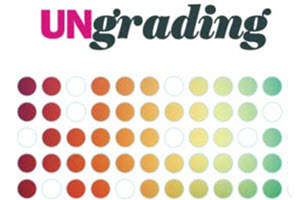
The third session of the Ungrading Learning Circle again featured three small group discussions. We read the closing chapters of the book in preparation for this discussion, closing with John Warner's contribution, Wile E. Coyote, Hero of Ungrading, which uses the iconic road runner v. coyote dynamic as a great metaphor. In his telling, the road runner represents perfection in teaching—greatly desired and unattainable—and we're all acting in the role of the coyote, throwing everything we can think of into our quest to catch that bird. What marks the coyote for greatness is his tenacity, persistence, and belief that he'll get there in the end.
Read our notes from the third session.
Ungrading, Part 2
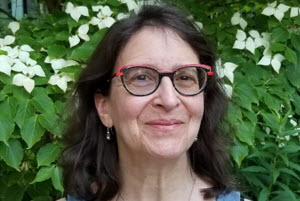
We were very fortunate that for the second meeting of our Learning Circle, Susan Blum, the editor of Ungrading, was able to join us via Zoom and share her insights. She kicked things off by discussing how and why the book came together, and how its development was affected by the Covid outbreak and the resulting changes in the educational landscape. It was interesting to hear that while ungrading practices have been in use for many years, the pandemic has led to increased attention to human-centered teaching practices, like ungrading.
Read more and access a recording of our session with Susan Blum.
Ungrading, Part 1

The Winter/Spring Learning Circle held its first session on February 23. Ungrading, by Susan Blum, attracted our biggest turnout ever, with more than 30 people signed up to participate. The book features a series of articles from instructors using a variety of ungrading approaches: grade free zones, self assessment, process letters, minimal grading, authentic assessment, contract grading, portfolios, peer assessment, and student made rubrics, among others. Given the size of the group, we split into three discussion groups to talk about Part 1 of the book, one in LIB 352 and two others in Zoom breakouts. In our groups, we talked about different ungrading techniques that we’ve used, the challenges ungrading presents for both students and faculty, and the potential benefits of de-emphasizing traditional grading systems.
Read more about our initial session.
The Ocean in the School, Part 4
 The final session of the Fall Learning Circle featured a virtual visit from Dr. Rick Bonus, chair of the Department of American Ethnic Studies at the University of Washington and author of The Ocean in the School. Dr. Bonus described how efforts to document how the University supported Pacific Island students instead revealed how little support the students actually felt. Thus began his work with these students to transform the University into an environment where they could thrive.
The final session of the Fall Learning Circle featured a virtual visit from Dr. Rick Bonus, chair of the Department of American Ethnic Studies at the University of Washington and author of The Ocean in the School. Dr. Bonus described how efforts to document how the University supported Pacific Island students instead revealed how little support the students actually felt. Thus began his work with these students to transform the University into an environment where they could thrive.
View recording and read more about this discussion with the author.
The Ocean in the School, Part 3
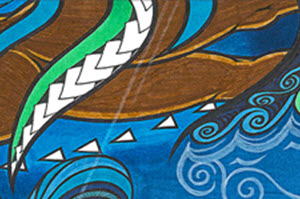
For the third meeting of the Fall Learning Circle, participants welcomed Soteria "Ria" Galo, SOU’s multicultural retention specialist. Ria was specifically recruited to improve retention among our American Samoan students. She was invited to meet with the Learning Circle to talk about retention efforts that are already in place and to provide her perspective on what American Samoan students need to thrive at SOU.
Ria was born in American Samoa but moved to the States when she was a small child. She shared her personal journey as a way of informing the group about how her own identity and experiences have played a significant role in her ability to identify with SOU students from American Samoa, and as a way of also acknowledging that she does not speak for an entire population or community.
Read more about Ria's visit to the Learning Circle.
The Ocean in the School, Part 2
 Vasa, the word for “ocean” in the Samoan indigenous language, was something taught to me mainly by Tavita as a deeply meaningful expression that students used and primarily referred to a geographical and metaphorical location of an ancestral or primordial home, a space that surrounded and connected multiple locations, and a place of comfort, sacredness, and sustenance, where one was loved and nurtured. To speak of being in the vasa was to exist in a place of reassuring familiarity and connection, so that one felt secure, knowledgeable, and respected in such a place. For these students, vasa was place, process, and relationships. And to be able to find and sustain community in a place that was alien or alienating to them, they invoked the holistic and evocative spirit of the vasa. To understand and engage with their surroundings and the conditions they faced as underrepresented minority students, they looked to the vasa as a repository of meaningful traditions, teachings, and valuable practices of resilience, respect, and illumination from as well as revered for sacred beings and ancestors. And by regarding school or aspects of school as if they were part of a living ocean, the vasa, these students were able to treat and infuse meaning into their school as if it were one’s place of love, respect, and belonging. In other words, for students, to transact school as vasa was to render it as if it were one’s indigenous and sacred home.
Vasa, the word for “ocean” in the Samoan indigenous language, was something taught to me mainly by Tavita as a deeply meaningful expression that students used and primarily referred to a geographical and metaphorical location of an ancestral or primordial home, a space that surrounded and connected multiple locations, and a place of comfort, sacredness, and sustenance, where one was loved and nurtured. To speak of being in the vasa was to exist in a place of reassuring familiarity and connection, so that one felt secure, knowledgeable, and respected in such a place. For these students, vasa was place, process, and relationships. And to be able to find and sustain community in a place that was alien or alienating to them, they invoked the holistic and evocative spirit of the vasa. To understand and engage with their surroundings and the conditions they faced as underrepresented minority students, they looked to the vasa as a repository of meaningful traditions, teachings, and valuable practices of resilience, respect, and illumination from as well as revered for sacred beings and ancestors. And by regarding school or aspects of school as if they were part of a living ocean, the vasa, these students were able to treat and infuse meaning into their school as if it were one’s place of love, respect, and belonging. In other words, for students, to transact school as vasa was to render it as if it were one’s indigenous and sacred home.
From The Ocean in the School: Pacific Islander Students Transforming Their University, Rick Bonus (27)
The Ocean in the School, Part 1

The Fall term 2021 Learning Circle is reading The Ocean in the School: Pacific Islander Students Transforming Their University by Rick Bonus. This book tells the stories of Pacific Islander students as they and their allies struggled to transform a university they believed did not value their presence. Drawing on dozens of interviews with students he taught, advised, and mentored between 2004 and 2018 at the University of Washington, Bonus outlines how, despite the university's promotion of diversity and student success programs, these students often did not find their education to be meaningful, leading some to leave the university. As these students note, they weren't failing school; the school was failing them.
Several questions were posed to the group including:
- Why did the students argue that the university had failed them?
- What did the students see was missing in their education and what did they do to address those missing pieces?
- Are there lessons here that relate to our experiences at SOU?
At the initial gathering of the Learning Circle on October 13, participants were joined by Elizabeth, past President and current VP of the Samoan Student Club at SOU. Read about her visit and the great conversation that ensued.
A Call to "Indigenize" the Classroom

Here is an insightful article that relays how the traditional teaching methods of indigenous people are well-aligned with contemporary reforms in education: Old ways are the new way forward: How Indigenous pedagogy can benefit everyone. The authors underscore that "learning can’t happen by simply Googling it. It has to be developed through relationships." They suggest "indigenizing the classroom also means using a more student-focused teaching style, such as providing a space for students to speak honestly while also respecting student silence, and encouraging students to really listen to each other." Many examples of using stories and metaphors are described in detail.
Learning from Small Teaching, Final Session
 The final session of the Small Teaching Learning Circle focused on Chapters 8 and 9: Growing and Expanding. The discussion led off with a comparison of the growth mindset versus the fixed mindset, detailing the well-known research of Carol Dweck describing the positive benefits of having a growth mindset — believing that one’s abilities can change with effort — versus the learning challenges involved in having a fixed mindset — thinking that one’s abilities are inherent and static.
The final session of the Small Teaching Learning Circle focused on Chapters 8 and 9: Growing and Expanding. The discussion led off with a comparison of the growth mindset versus the fixed mindset, detailing the well-known research of Carol Dweck describing the positive benefits of having a growth mindset — believing that one’s abilities can change with effort — versus the learning challenges involved in having a fixed mindset — thinking that one’s abilities are inherent and static.
Small Teaching, Session 3
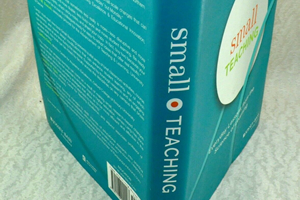 The third Learning Circle session on Small Teaching focused on the concepts of Self-Explaining and Motivating our students, generating a discussion that produced both self-awareness and new viewpoints. There was consensus on the importance of self-growth as teachers as well as student growth.
The third Learning Circle session on Small Teaching focused on the concepts of Self-Explaining and Motivating our students, generating a discussion that produced both self-awareness and new viewpoints. There was consensus on the importance of self-growth as teachers as well as student growth.
Self-explaining refers to the process of having students explain aloud or in writing their thinking processes as they solve problems. Clay Austin began by asking, “Why do we think it works for people to explain things to themselves? The group went on to point out the difference experience makes in presenting information to a new learner. “You as the expert might think it is a ten-step process. But the truth is, for the novice it is perhaps 20 steps. So when students self-explain, they actually fill in the gaps of your examples.”
It's the Little Things, Session 2
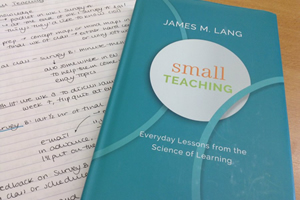 Our Learning Circle met for the second time on November 6 in LIB 329. The topics were Predicting and Connecting as part of the Small Teaching process. Rediscovery was the main thread of the day as Jamie Hickner shared, “I liked the reminder of some of the teaching practices we used to do, but may have gotten away from over time.”
Our Learning Circle met for the second time on November 6 in LIB 329. The topics were Predicting and Connecting as part of the Small Teaching process. Rediscovery was the main thread of the day as Jamie Hickner shared, “I liked the reminder of some of the teaching practices we used to do, but may have gotten away from over time.”
In Chapter 3: Predicting the author describes reasons and strategies for asking students to make predictions on course content. For example, giving students a non-graded pretest on the material before they actually are exposed to it can lead to greater memory and understanding. It can also help disrupt what the author calls “fluency illusions” (p. 51), showing students that they may actually be less fluent with learning concepts than they believe.
Does ‘High-Impact’ Teaching Cause High-Impact Fatigue?
 Colleges that care about teaching often promote the value of "high-impact practices" and "transformative" learning. That could mean a writing-intensive course, a small seminar for freshmen, a service-learning project, or even something as simple as an informal meal in a faculty member’s home.
Colleges that care about teaching often promote the value of "high-impact practices" and "transformative" learning. That could mean a writing-intensive course, a small seminar for freshmen, a service-learning project, or even something as simple as an informal meal in a faculty member’s home.
Not only are these courses intense for students, but they can be exhausting for the faculty who teach them. As the authors put it, “Designing and managing these efforts can be all-consuming and energy-draining. You may need a manageable case of obsessive-compulsive disorder just to survive the experience.” They offer 11 concrete suggestions for reducing your load even while you’re implementing “HIPs” in your classroom.
It's the Little Things That Count!
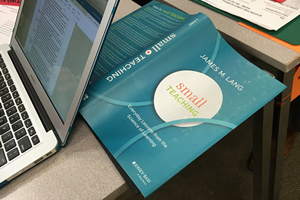 The Fall 2019 Learning Circle held its initial gathering on October 23 to begin discussing Small Teaching by James Lang. Lang advocates “small teaching” techniques — small changes in our practices that lead to big gains in student learning. Information retrieval was the group’s first topic — the idea that simply asking students to recall from memory previously learned material actually increases the strength and durability of that memory, thereby reinforcing the learning.
The Fall 2019 Learning Circle held its initial gathering on October 23 to begin discussing Small Teaching by James Lang. Lang advocates “small teaching” techniques — small changes in our practices that lead to big gains in student learning. Information retrieval was the group’s first topic — the idea that simply asking students to recall from memory previously learned material actually increases the strength and durability of that memory, thereby reinforcing the learning.
Using Technology to Help First-Gen Students
 Colleges should put digital tools at the center of their programs for ensuring the academic success of students who are the first in their families to go to college, write Ana M. Martinez Aleman, Heather Rowan-Kenyon and Mandy Savitz-Romer. In this Inside Higher Ed article, the authors describe how technology can support first generation students by providing support for learning and for building social connections. (October 10, 2018)
Colleges should put digital tools at the center of their programs for ensuring the academic success of students who are the first in their families to go to college, write Ana M. Martinez Aleman, Heather Rowan-Kenyon and Mandy Savitz-Romer. In this Inside Higher Ed article, the authors describe how technology can support first generation students by providing support for learning and for building social connections. (October 10, 2018)
For One Professor, How a Course on Evil Gave Students Hope
 Sometimes your best ideas come from a moment of desperation. That happened to Scott P. Roberts, and both his course, and his teaching, were transformed as a result.
Sometimes your best ideas come from a moment of desperation. That happened to Scott P. Roberts, and both his course, and his teaching, were transformed as a result.
Roberts, then director of undergraduate studies in psychology, had introduced a course at the University of Maryland called The Psychology of Evil — part of a general education series designed to encourage undergraduates to think about life’s big questions. But he was also flying by the seat of his pants.
The Nuance of Note Taking
 Feel strongly about the heated debate on whether students should take notes by hand or on their laptops? If so, this may not be the read for you.
Feel strongly about the heated debate on whether students should take notes by hand or on their laptops? If so, this may not be the read for you.
Faculty developer Karen Costa makes the case that most students should practice doing both, and neurodiverse students may really be best served by one or the other. Lesson 1: Avoid mandating the use or nonuse of technology. Lesson 2: Emphasize note-taking methods such as Cornell Notes or concept mapping that can be done with or without technology aids.
How to Hold a Better Class Discussion: Advice Guide
 Most of us value the role of discussion in learning, but may be vague on the why to or how to of it all. This is a breezy, if long, attempt to give advice. It includes an interesting discussion of “civil attention” — the norm of note-taking and nodding, and how to move toward “paid attention” by using Nerf balls and poker chips.
Most of us value the role of discussion in learning, but may be vague on the why to or how to of it all. This is a breezy, if long, attempt to give advice. It includes an interesting discussion of “civil attention” — the norm of note-taking and nodding, and how to move toward “paid attention” by using Nerf balls and poker chips.
Making Office Hours Less Scary
 Ask just about any college student — office hours are scary. NPR Education reporter Elissa Nadworny reminds us that “students often don't know what office hours are – or what they're for, or how they're different from class time.”
Ask just about any college student — office hours are scary. NPR Education reporter Elissa Nadworny reminds us that “students often don't know what office hours are – or what they're for, or how they're different from class time.”
It’s easy to see how office hours are “part of what some students say is a hidden curriculum – the set of rules on a college campus that no one ever tells you about.” Nadworny offers this guide to taking the fear out of office hours.
Laptops and Phones in the Classroom: Yea, Nay or a Third Way?
 The ongoing question of student use of laptops and phones in the classroom in the continuing battle for our students' attention gets a refresher in this article from Learning and Tech via the NPR website. Faculty interviewed espouse the full range of approaches to dealing with student devices, from a total classroom ban to fully incorporating these tools in learning activities.
The ongoing question of student use of laptops and phones in the classroom in the continuing battle for our students' attention gets a refresher in this article from Learning and Tech via the NPR website. Faculty interviewed espouse the full range of approaches to dealing with student devices, from a total classroom ban to fully incorporating these tools in learning activities.
How To Teach a Good First Day of Class
 You can never have a second first day of class, so it is worth getting some good ideas to start your course off right. See this advice guide from James Lang at the Chronicle of Higher Education, to remind you of things you already know (“Don’t start with the syllabus”) and things you might not (“What you wear matters”). But if you’re tight on time, scroll down for some great practices, like the one from Vanderbilt’s Derek Bruff, who gives his math students two problems, one they can do now, and one they cannot but will be able to solve at the course’s end, to show them what they will learn in the class. Brilliant.
You can never have a second first day of class, so it is worth getting some good ideas to start your course off right. See this advice guide from James Lang at the Chronicle of Higher Education, to remind you of things you already know (“Don’t start with the syllabus”) and things you might not (“What you wear matters”). But if you’re tight on time, scroll down for some great practices, like the one from Vanderbilt’s Derek Bruff, who gives his math students two problems, one they can do now, and one they cannot but will be able to solve at the course’s end, to show them what they will learn in the class. Brilliant.
3 Ways to Transform a Lecture Class

Cathy Davidson makes the case that "even in the most constrained institutional situation — and even when, as a beginning professor, you might feel the most powerless — there are easy yet constructive ways to make a difference in a standard lecture format and to make learning your objective. Some of those ways might focus less on the actual lecturing you do and more on how you introduce and frame the course."
The Best and Worst Ways to Respond to Student Anxiety
 Depending on who you talk to “it” can be caused by any number of things. Or said simply, anyone's fault. One thing everyone does agree on is that the problem is an epidemic or tsunami, to quote the article. We just can't agree how to deal with it. The “it” in this case is student anxiety and it is seeping into every area of the system.
Depending on who you talk to “it” can be caused by any number of things. Or said simply, anyone's fault. One thing everyone does agree on is that the problem is an epidemic or tsunami, to quote the article. We just can't agree how to deal with it. The “it” in this case is student anxiety and it is seeping into every area of the system.

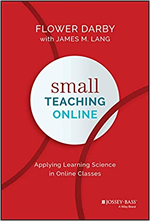 The final area of discussion was “Big Teaching,” ideas around activity-based, team-based, and service-based learning. Jacki compared the lessons of the trip students take to Mexico with shorter term role-based lessons. Closing thoughts dealt with the value of focusing on the real world instead of just the classroom to give the content more personal value and relevance to our students.
The final area of discussion was “Big Teaching,” ideas around activity-based, team-based, and service-based learning. Jacki compared the lessons of the trip students take to Mexico with shorter term role-based lessons. Closing thoughts dealt with the value of focusing on the real world instead of just the classroom to give the content more personal value and relevance to our students.
 Profile #11
Profile #11



